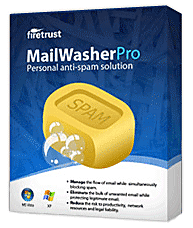Spybot Search & Destroy updates for Dec 30, 2009
Spybot Search & Destroy is a free (for personal non-business use) anti-spyware/spyware removal program used by millions of people around the World, to protect their computers from spyware, adware, Trojans and other types of malware. Spybot updates for malware detections are released every Wednesday and this week's updates were released on schedule. If you are using Spybot S&D to protect your computer you should check for updates every Wednesday afternoon and apply all that are available.
Malware writers are constantly modifying their programs to evade detection, so anti-malware vendors have to issue regular updates to keep up with the bad guys. New definitions and false positive fixes for Spybot Search and Destroy are usually released every Wednesday. The last two week's updates were released on schedule on December 30, 2009, as listed below. 7 new or modified fake security programs (fraudulent anti virus/spyware) were added to the "Malware" detections (plus 5 other malware entries), plus 14 new or modified Trojans, rootkits and spam bots were added to the "Trojan" list.
The latest new or modified "Malware" category threats are all fake security programs and scans. The names used by Spybot S&D are as follows:
Fraud.GuardPCs
Fraud.MalwareDefense
Fraud.SecurityTool
Fraud.Sysguard
Fraud.TheDefend
Fraud.VolcanoSecuritySuite
Fraud.XPPoliceAntivirus
Lop, Microsoft.Windows.RedirectedHosts
Win32.Agent.ieu
Win32.Delf.rm
Win32.Fraudload.md
Win32.LisboaAerea
The latest "Trojans" that were added or updated are:
Virtumonde.sci
Virtumonde.sdn
Win32.OnLineGames.bkpf
Win32.OnLineGames.down
Win32.OnLineGames.gjwa
Win32.OnLineGames.mfar
Win32.OnLineGames.mfas
Win32.OnLineGames.mffk
Win32.OnLineGames.mfft
Win32.OnLineGames.ulja
Win32.OnLineGames.ultz
Win32.OnLineGames.ulvo
Win32.OnLineGames.unxp
Win32.ZBot
Spybot S&D currently has 1797852 fingerprints in 694008 rules for 5101 products.
False Positives Reported
In addition to definitions being added there were some adjustments that were made to fix false positive detections that can break harmless programs. This week's false positive reports and fixes are as follows:
1: A false positive detection in the TeaTimer module, flagging "ArcMediaService.exe" as malware, a week ago, was actually fixed on Dec 30, 2009.
For details about how to apply updates correctly and download links for Spybot Search & Destroy, please read my extended content.
Updating Spybot Search and Destroy
Before you update Spybot Search and Destroy make sure you have the latest official version. Older versions are no longer supported and will cause you a lot of grief when you immunize and scan for problems. Only download Spybot S&D from the official website, at: spybot.info, or from its alternate domain: Safer-Networking.org. Fake versions with similar names will rip you off for payment to remove threats, whereas the real Spybot Search & Destroy is free for personal use. No subscriptions, no download fees, but, donations are gladly accepted.
In case you are new to Spybot S&D, there are two ways to update the program and malware definitions. The preferred method (For Windows PCs) is to go to Start > (All) Programs > Spybot - Search & Destroy > Update Spybot - S&D. The independent update box will open. Leave the default options as is, unless you need all languages or want beta definitions, and click on "Search." Another box will open with "mirror" locations around the world where you can download updates. Select a location nearest to you from the list and click on "Continue." Make sure all updates are checked, then click on "Download." If all definitions are verified as being correct the check marks will disappear from the check boxes and be replaced with green arrow graphics. However, sometimes one or more mirror locations have not updated all of the definitions and you will get a red X for those definitions. Click on Go Back, select a different mirror, and try again. I have consistent success using Giganet or the Safer-Networking servers. When all updates have succeeded, click on "Exit."
You can also download the latest definition includes file from a clean PC and save them to a removable disk or drive, then install them into the Spybot S&D program while the infected PC is offline. This helps you disinfect a PC that cannot presently get online, or cannot access security websites for updates (because of the Conficker or similar malware), or due to other networking problems. The downloaded definition includes will look for a typical Spybot installation location and will update it instantly, as long as the program is closed during the updating process.
Download links and more instructions about using Spybot Search and Destroy are in my article titled "How to use Spybot Search & Destroy to fight malware".
TeaTimer false positives
In the case of Teatimer false positives that are fixed by updates, TeaTimer will have to be restarted after the update is applied. TeaTimer cannot be updated with new definitions if it is still running! After you update definitions to fix false positives, a restart of either TeaTimer or the Computer is required. If this doesn't fix the false positives, you may need to reset the TeaTimer detection list, as follows:
Right click the (TeaTimer) Resident tray icon
Select "Reset lists"
Alternately, close and restart TeaTimer using this method:
* start Spybot S&D
* switch to advanced mode
* navigate to "Tools" , then "Resident"
* uncheck the check box for Resident TeaTimer to close TeaTimer
* wait a bit so TeaTimer can unload completely, for instance wait 1min
* check the check box for Resident TeaTimer again to restart the TeaTimer
If that fails also, please read the rest of the things to try on this forum page, in replies #2 and #4.
When TeaTimer blocks the file you can also allow the file to be executed (also remove the check mark for deletion). You can exclude any file from further detections during a scan by right clicking the items in the Spybot S&D scan result and select "exclude this detection from further searches"





